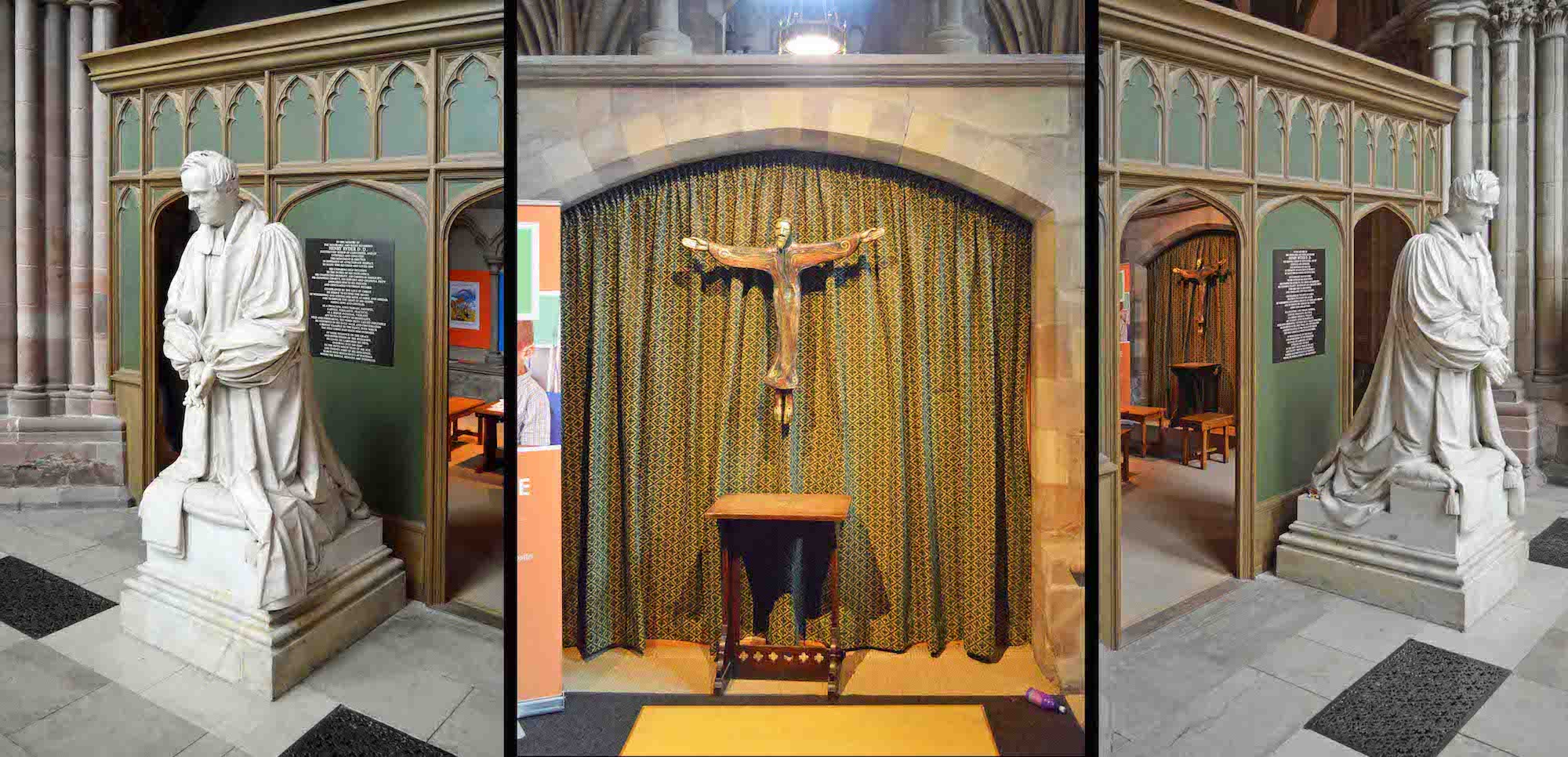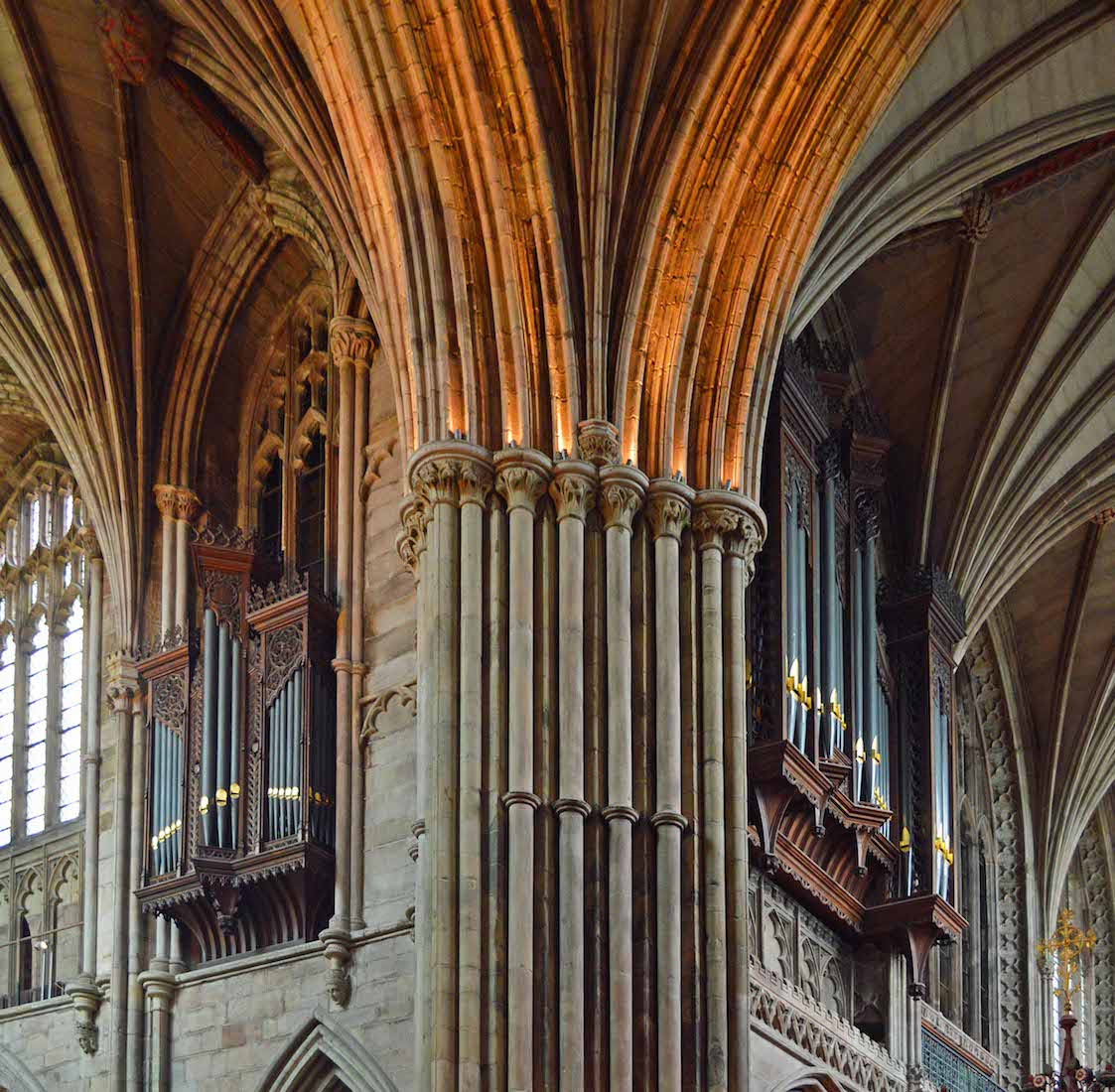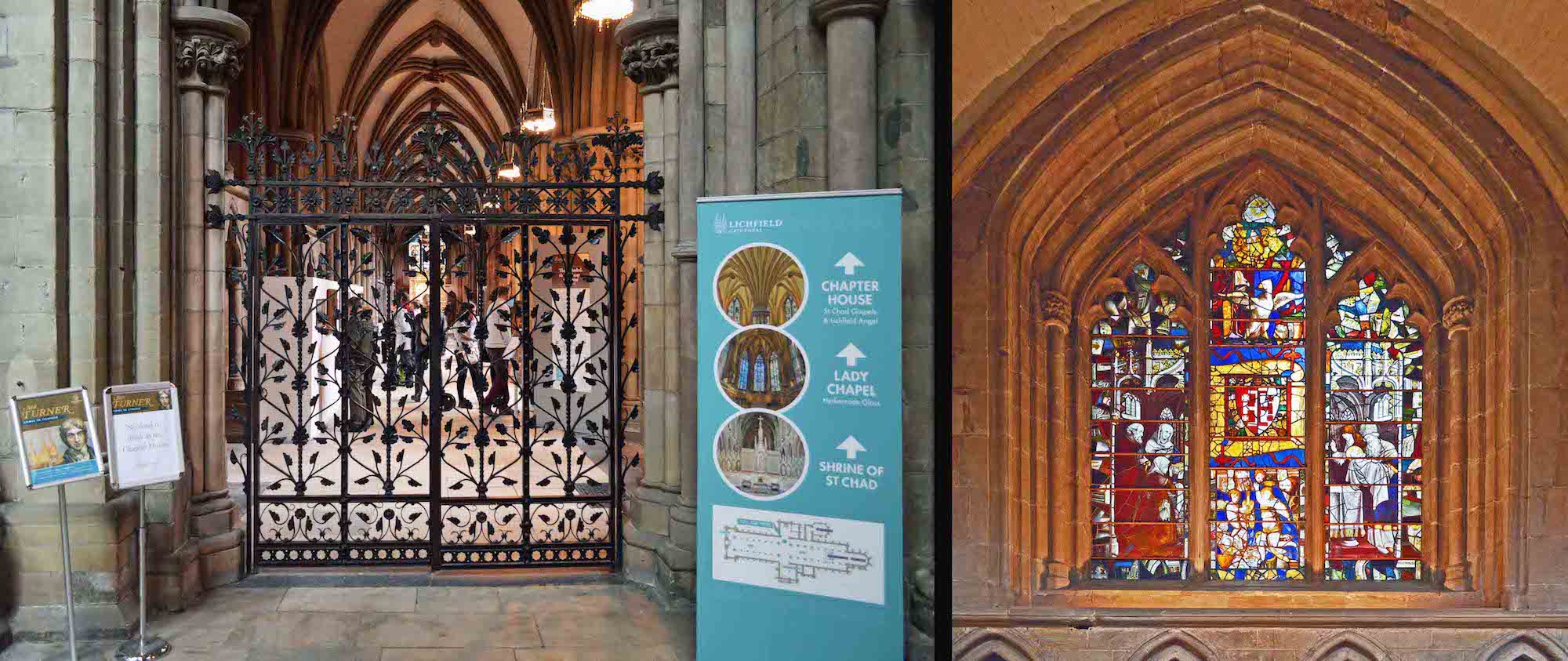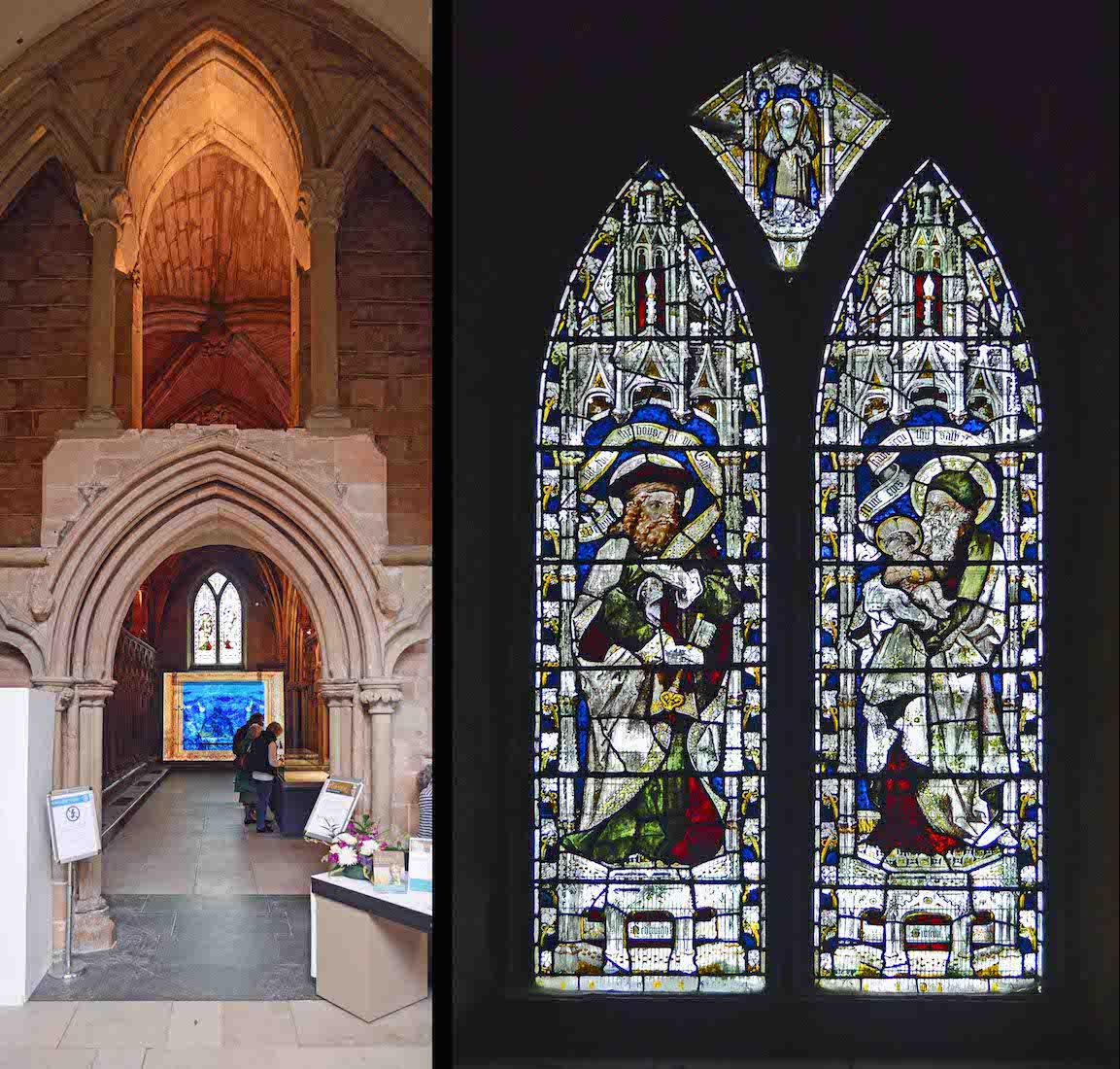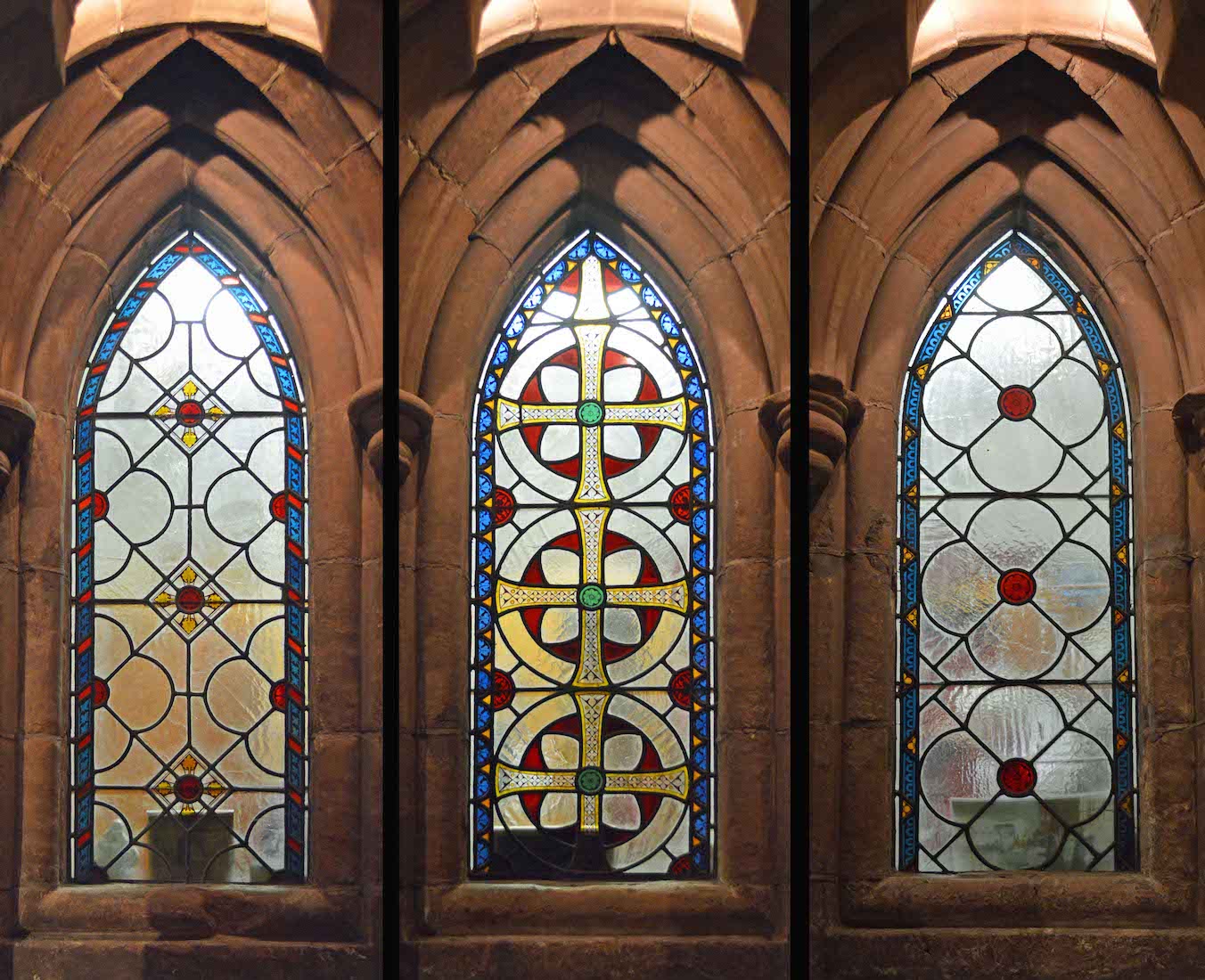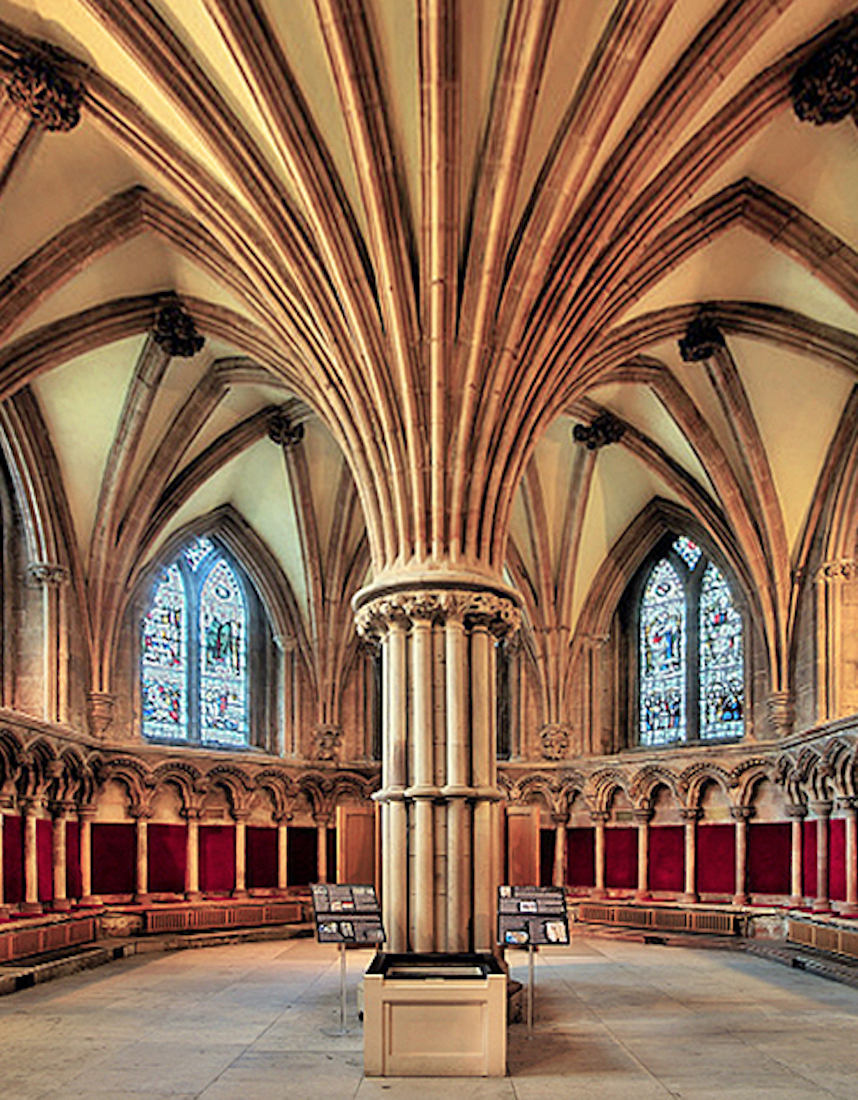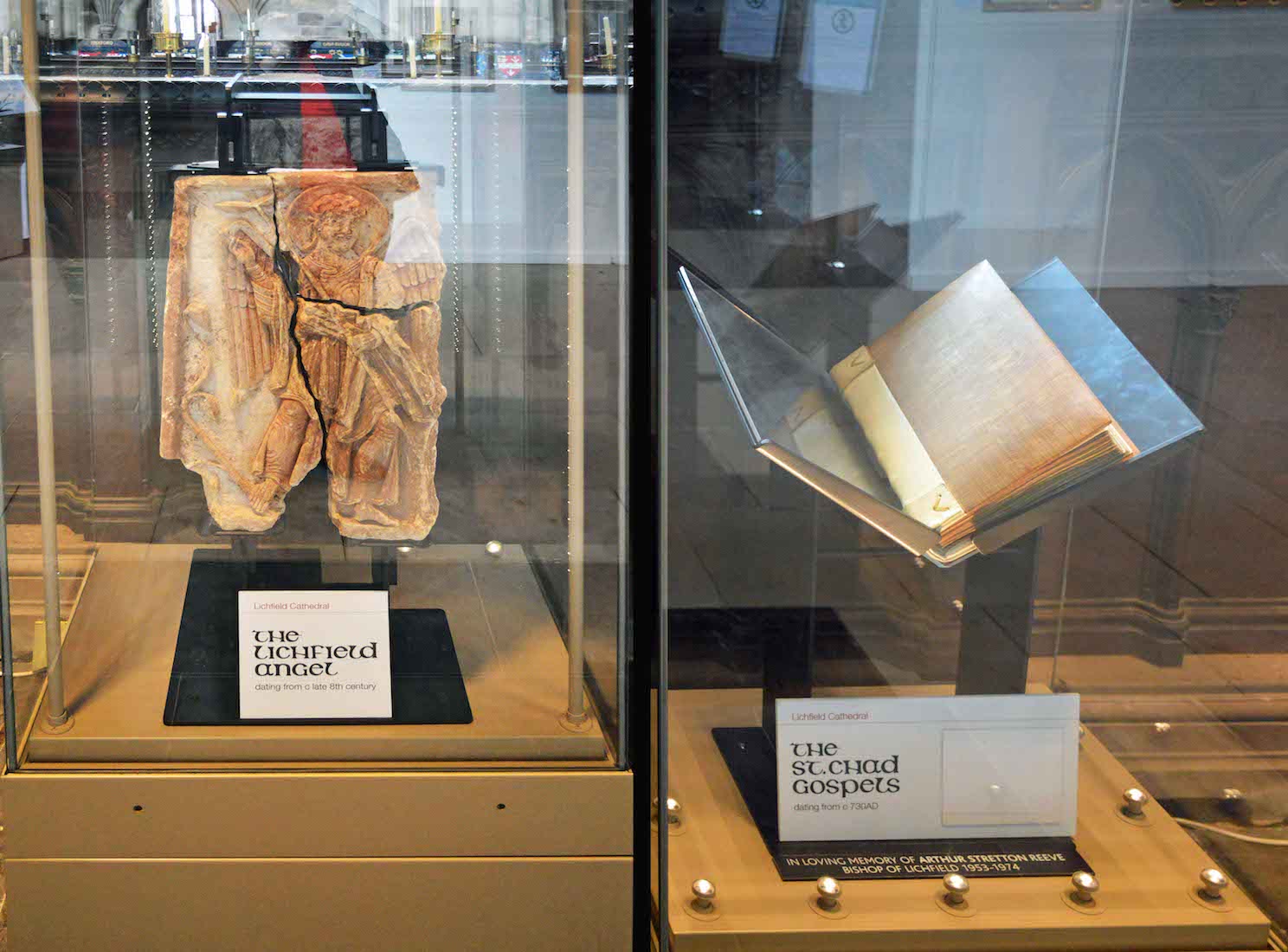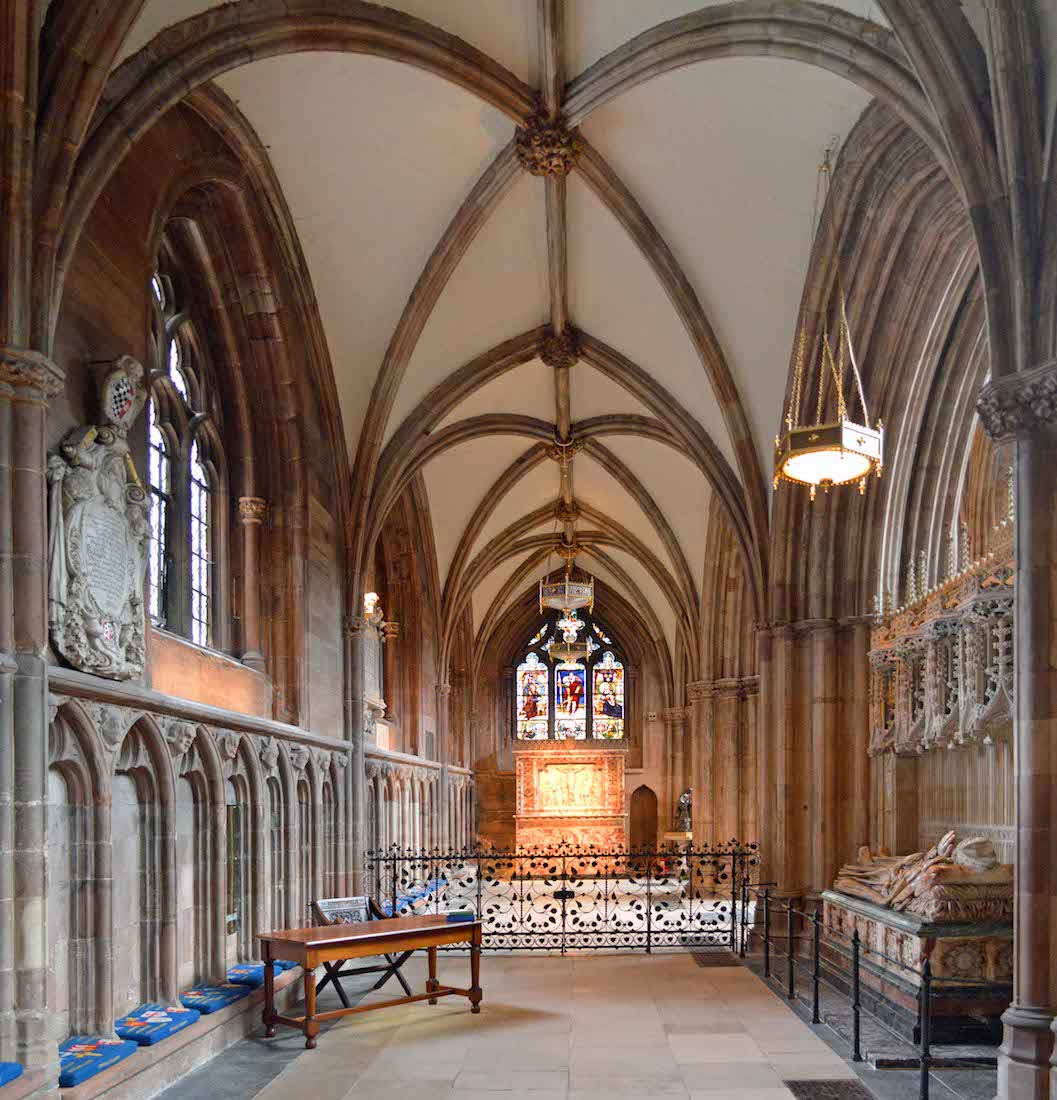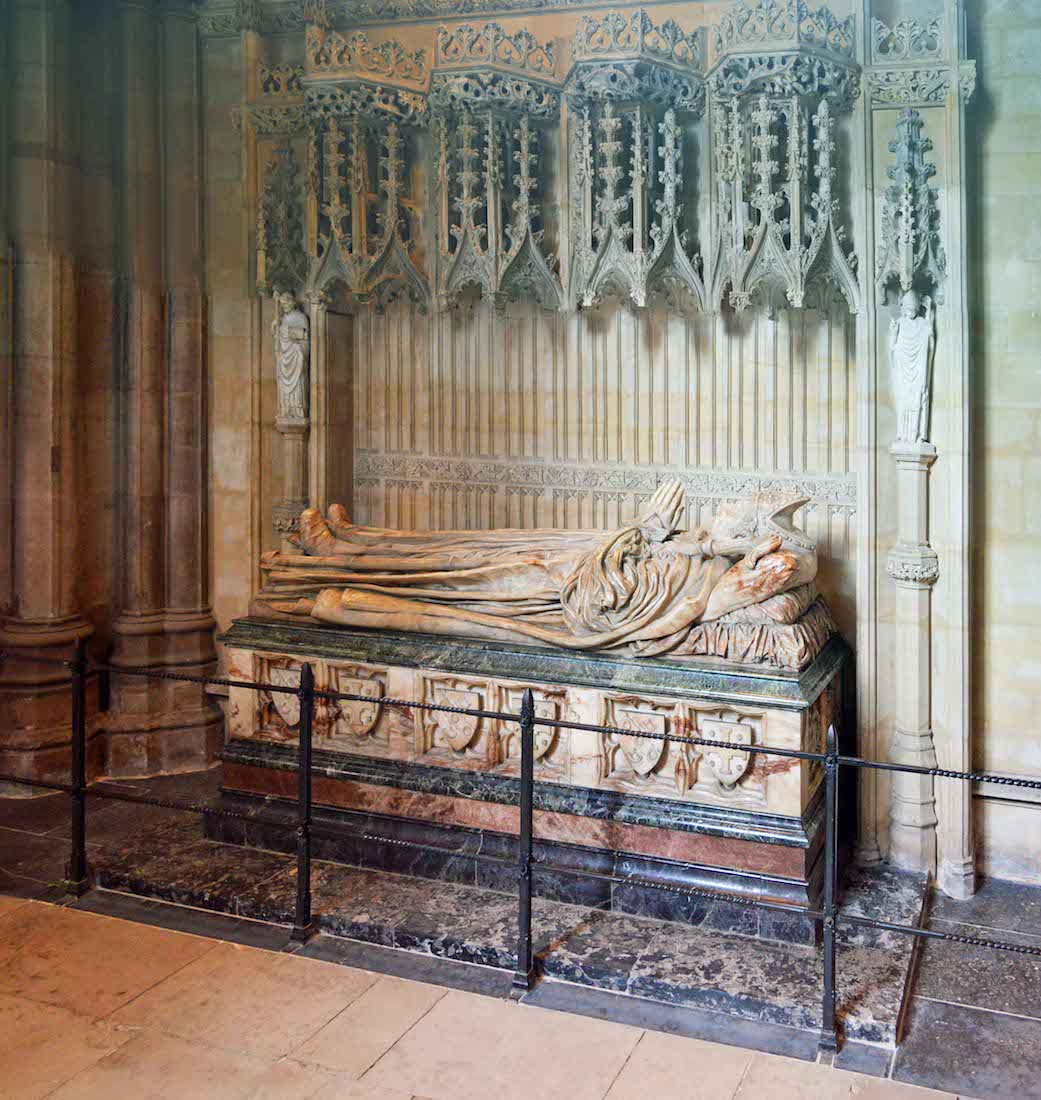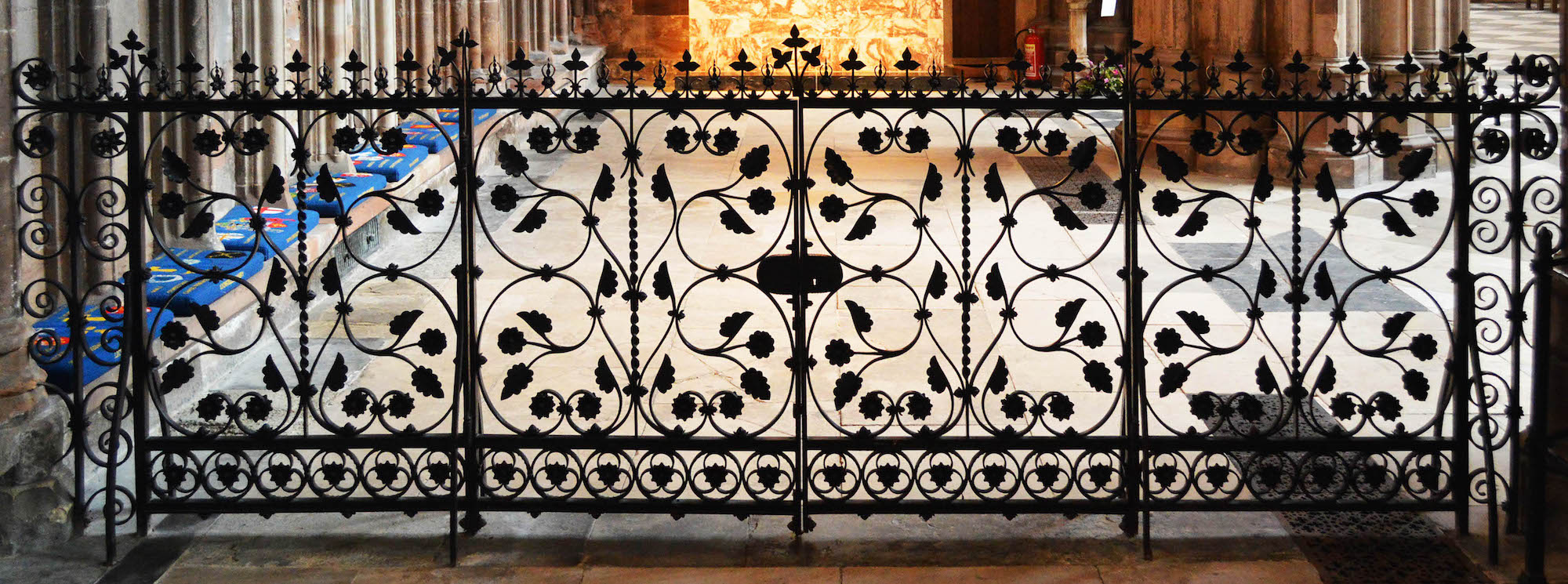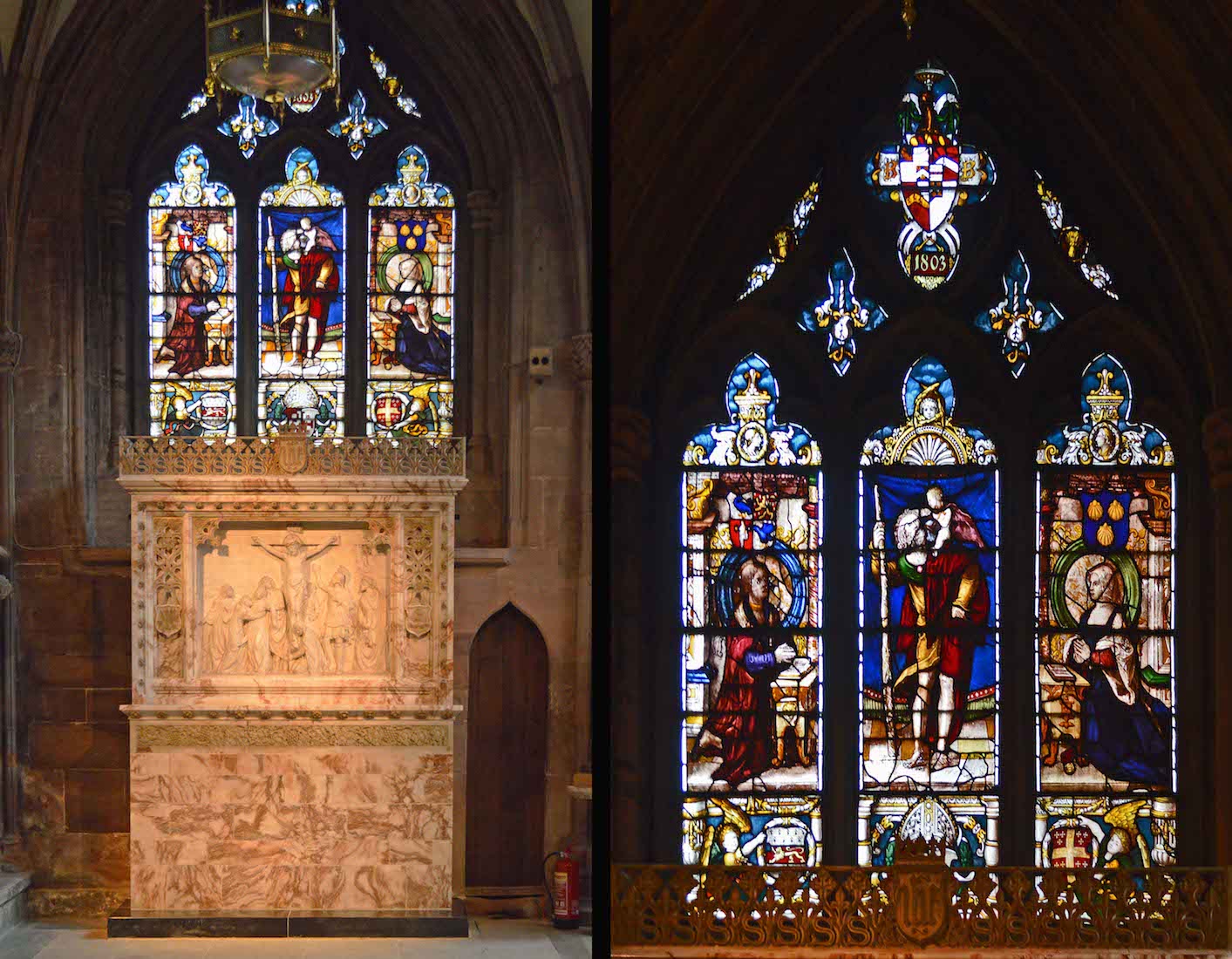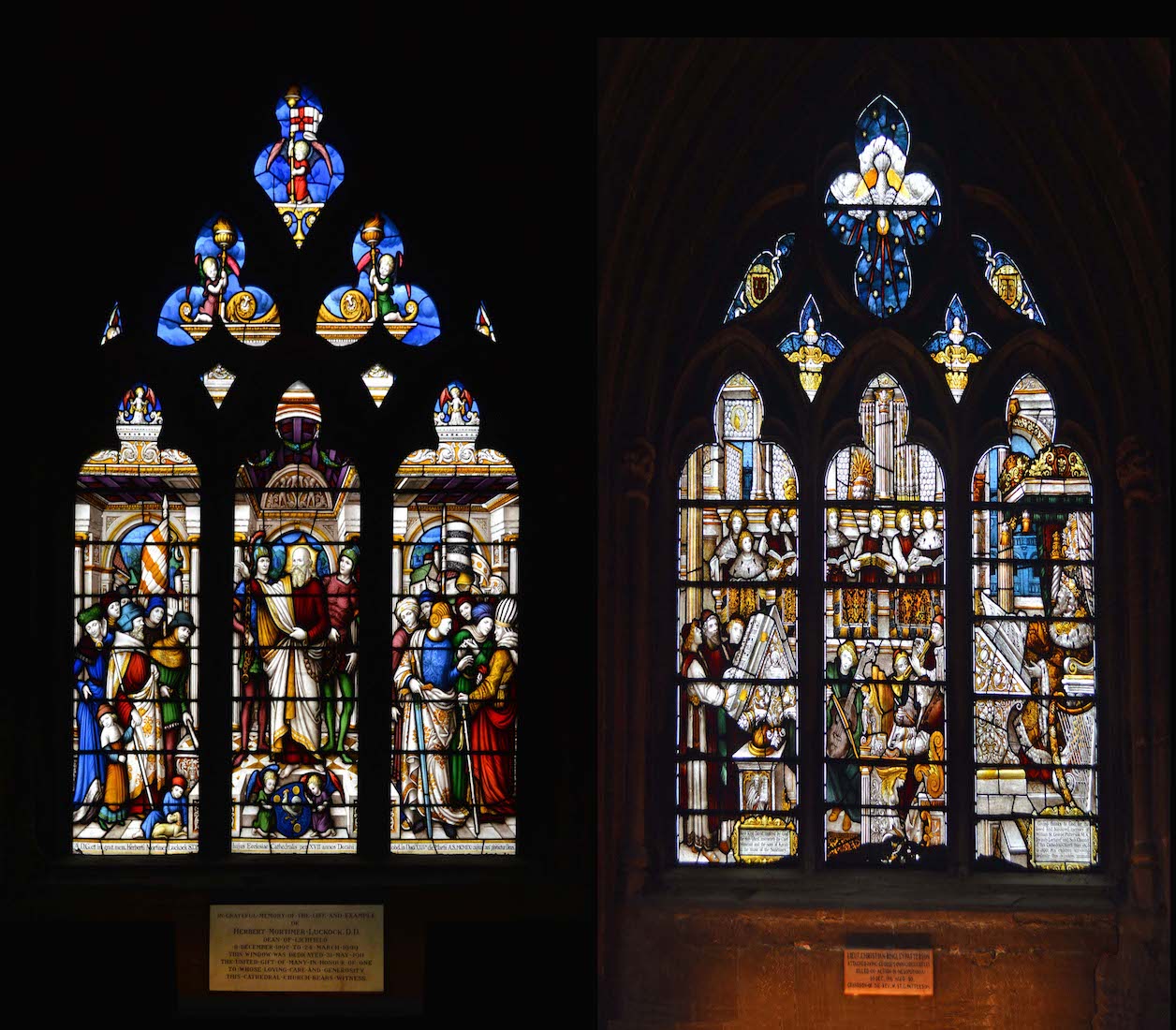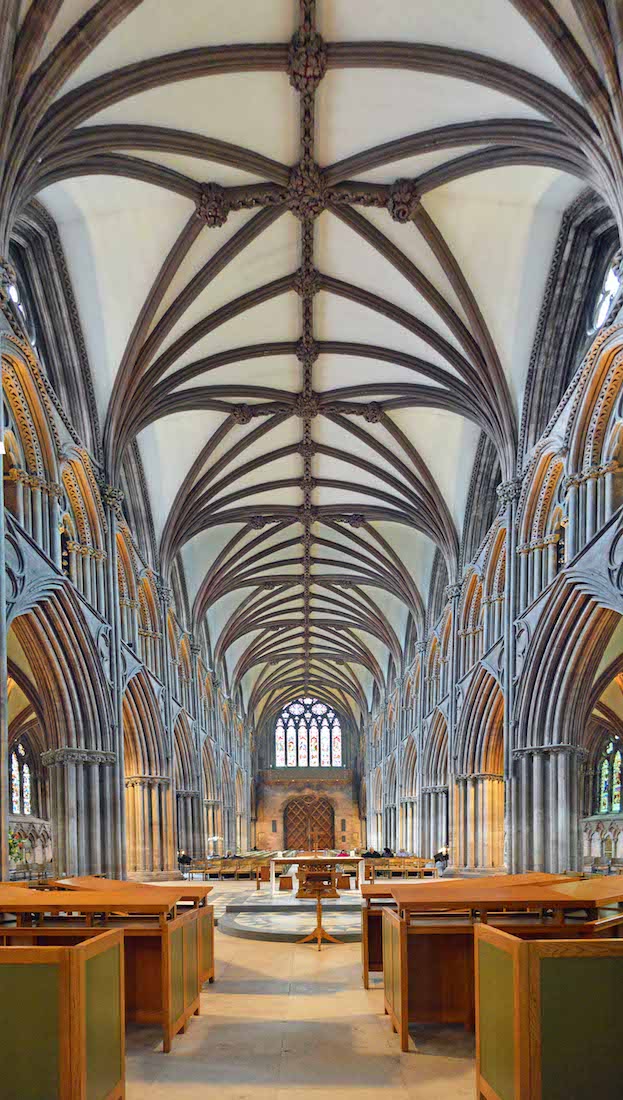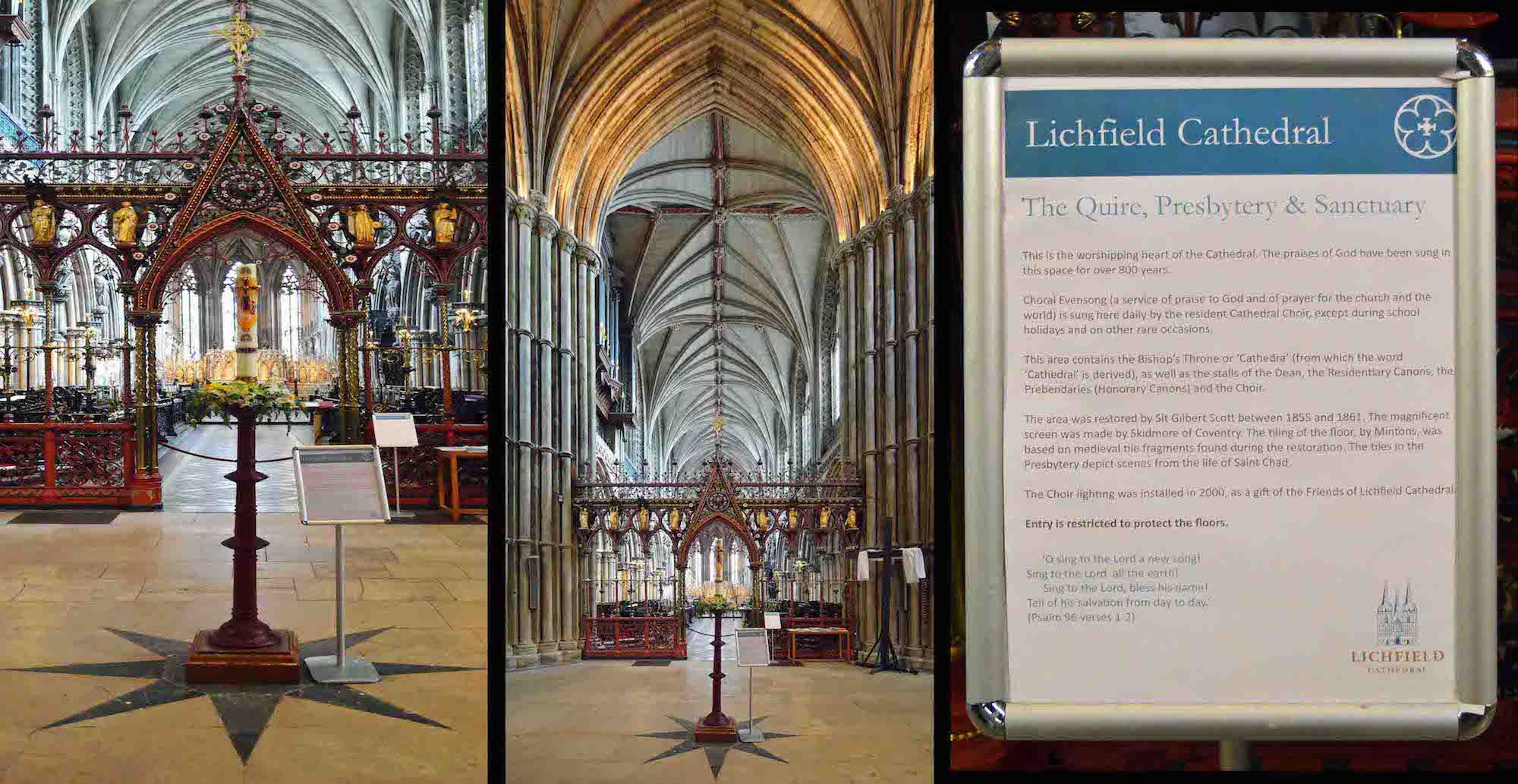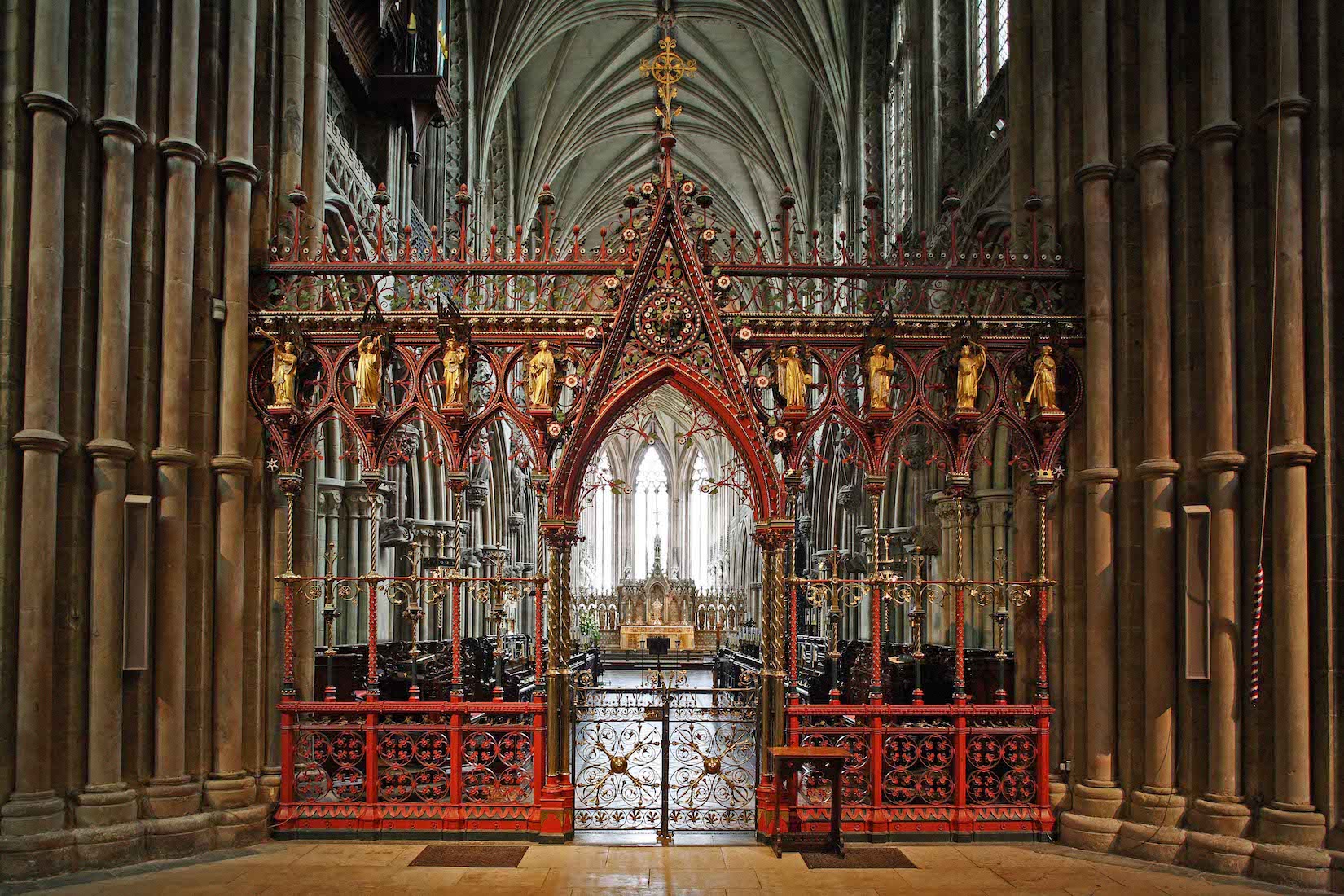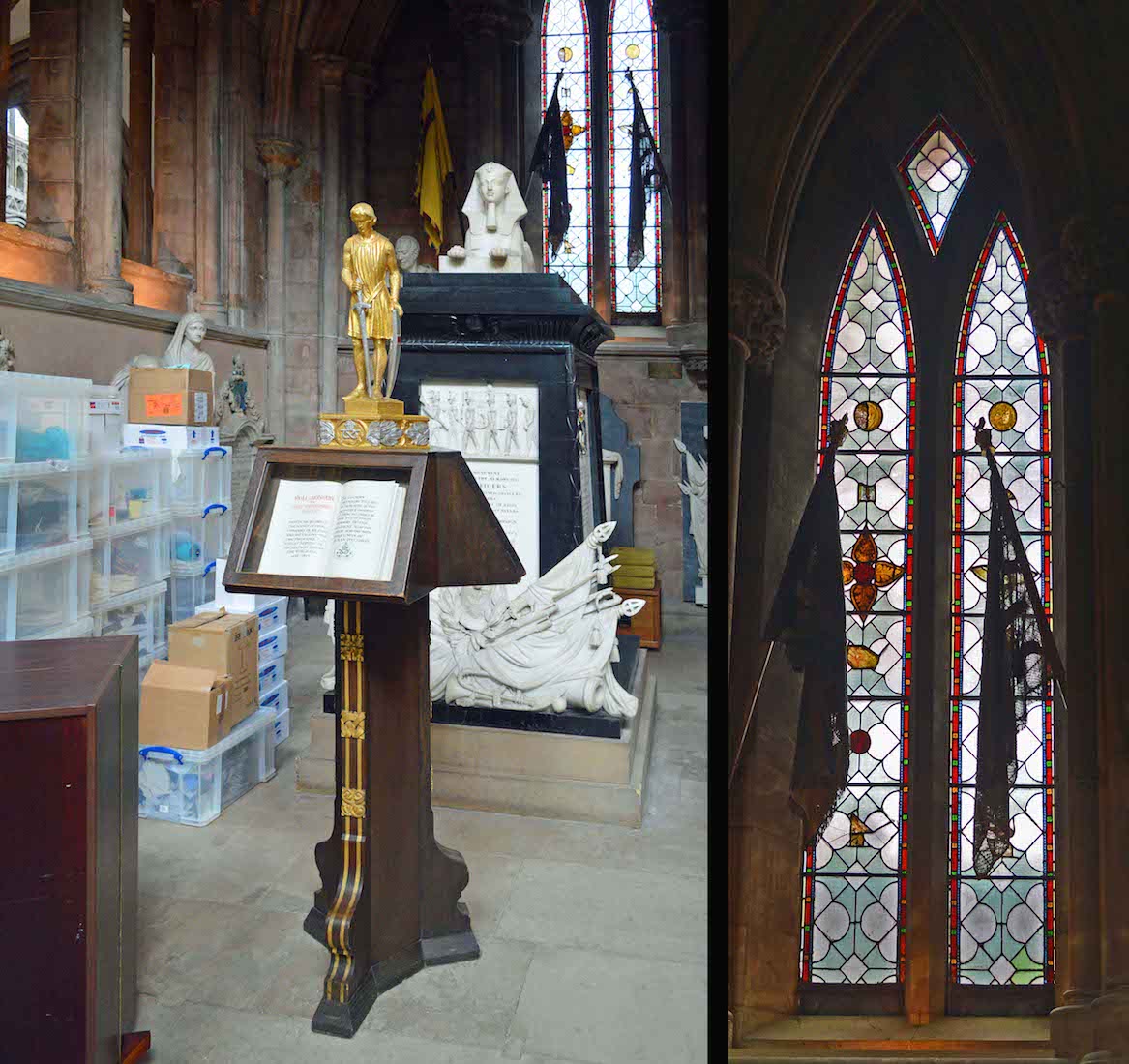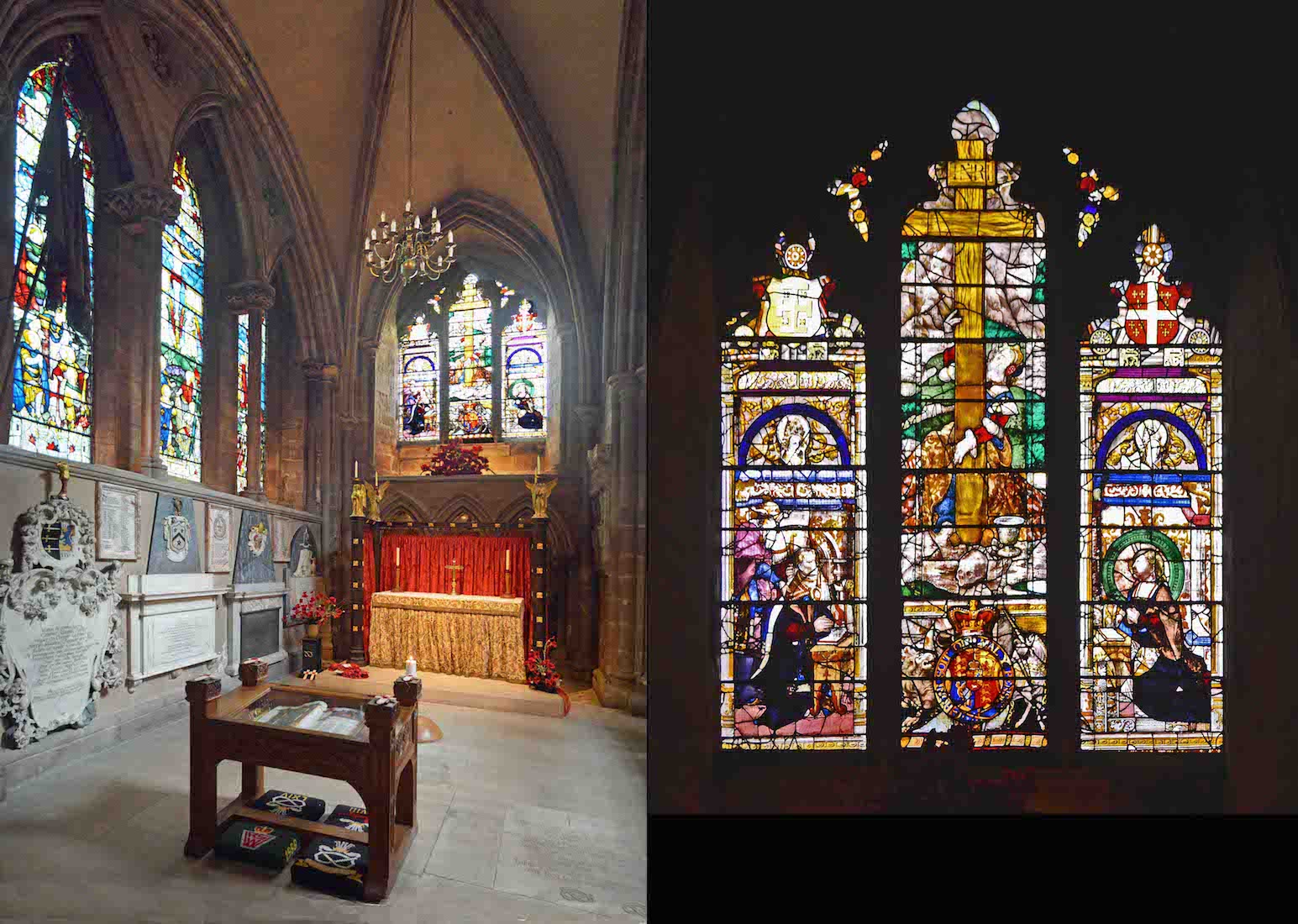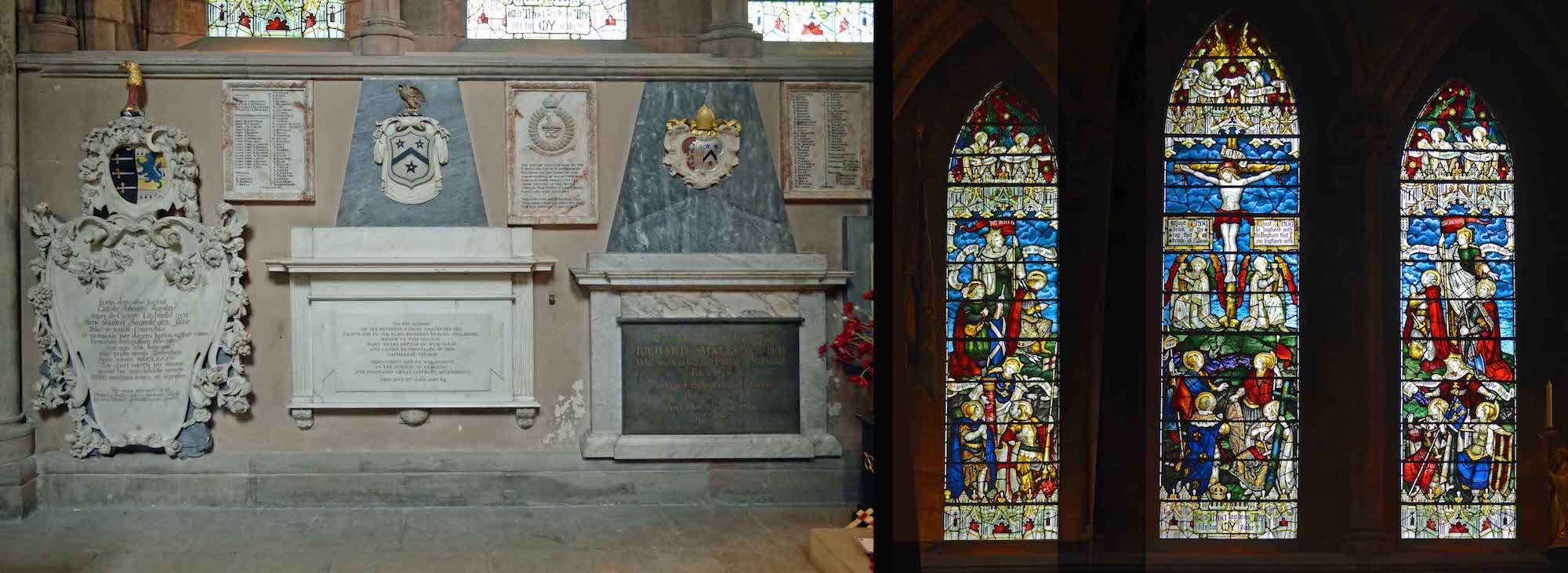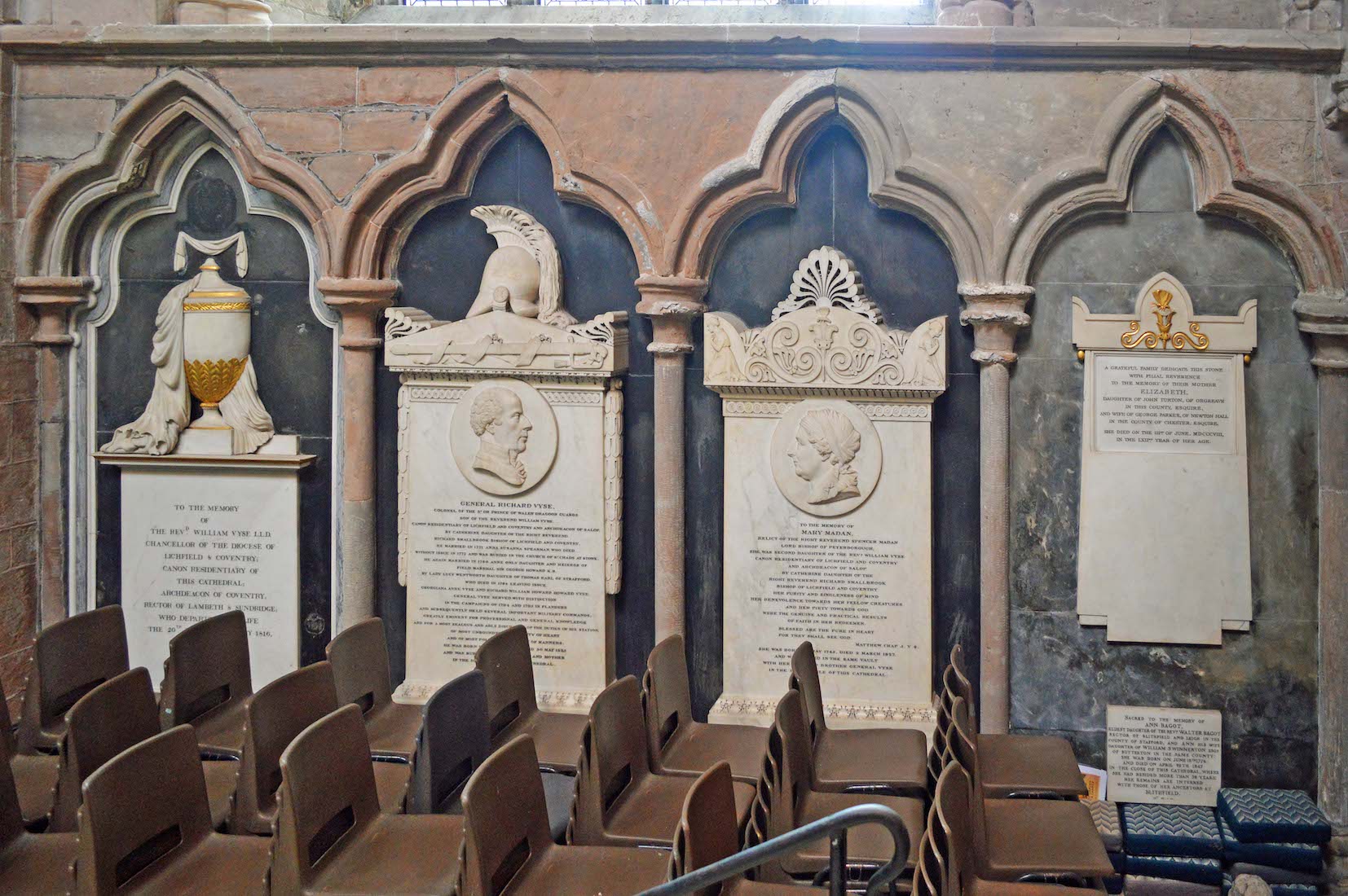
These memorial tablets are on the West wall of the transept, and can be seen by climbing the end steps and peering over the barricade! At left is a memorial to The Revd William Vyse LLD who held positions in the Diocese of Lichfield and Coventry and in this Cathedral. Next to this is a memorial to his son Richard who had a distinguished military career. Further to the right is a memorial to Mary Madan, second daughter of William Vyse. No family connection is mentioned for Elizabeth Turton. PLAN
42. TWO EFFIGIES
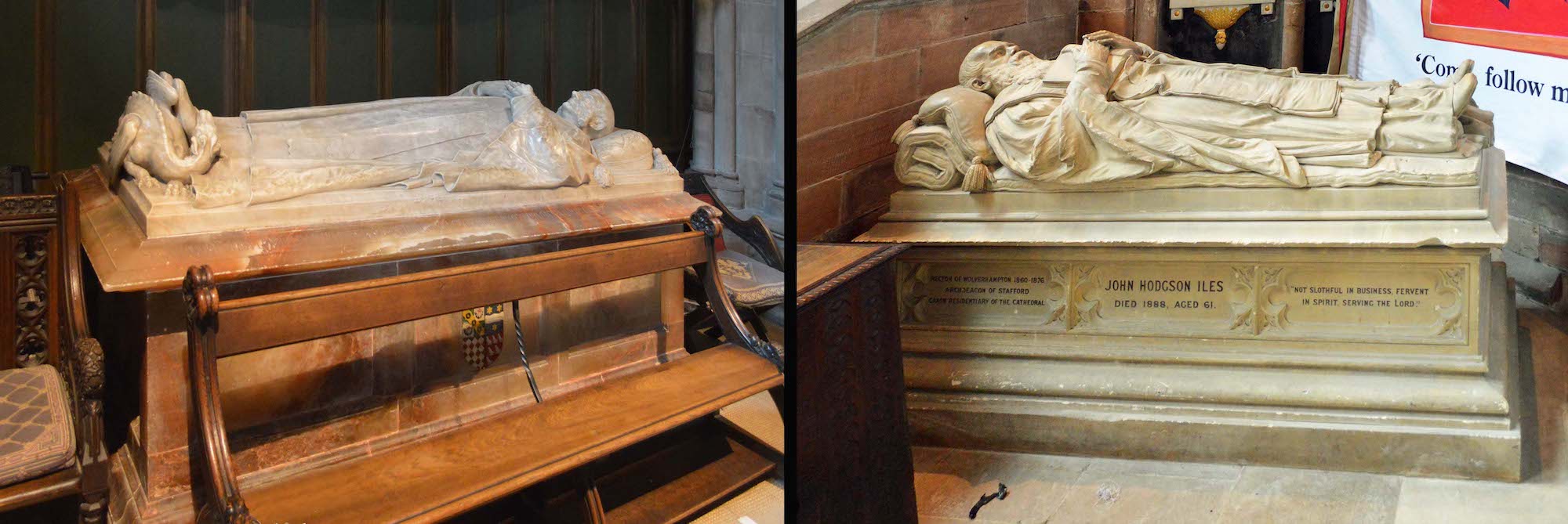
These two effigies lie at the Northern end of the North transept, one behind the barricade. At right is the effigy of John Hodgson Iles who died in 1888 and who was Canon Residentiary of this Cathedral. The monument at left is a cadaver remembering Dean Heywood who died in 1492. It was moved here in 1877.
43. HENRY RYDER STATUE
On the Eastern side of the North transept an imposing statue of Henry Ryder stands outside the entrance to St Stephen’s Chapel. Henry Dudley Ryder (1777 – 1836) was a prominent English evangelical Anglican bishop in the early years of the nineteenth century. He was the first evangelical to be raised to the Anglican episcopate. He was Bishop of Lichfield and Coventry from 1824. The simple St. Stephen's chapel was used as the bishop’s consistory court in the late 17th century. The Chapel has an unusual carved wooden crucifix.
44. ORGAN
The organ pipes are situated at the corner of North transept and presbytery. The present organ dates from 1861, the year that Gilbert Scott completed the refurbishment of the Quire. The organ was rebuilt in 1884 by William Hill and Sons. In 1907 it was resited from its old position in St Stephen’s Chapel to its present position. The organ was enlarged, and a new console provided in 1908. Rebuilding took place again in 1974 by Hill, Norman, and Beard, and again in 2000 by Harrison and Harrison. The latest work on the organ gives the organ 80 speaking stops, and 5,038 pipes..
45. THROUGH TO THE NORTH QUIRE AISLE
The gates through to the quire aisles are of black wrought iron, and delightfully decorated with flowers and leaves. (I wonder who nudged the gate shut?!) The window at right is just inside the gate, high up on the North (left) wall of the aisle. The window consists of reassembled pieces of broken glass, has the Shield of the Lichfield See at centre (incorporating a modified Jerusalem Cross), and depicts Mary and Joseph bringing the baby Jesus to the Temple to be blessed by Anna and Simeon.
46. VESTIBULE TO CHAPTER HOUSE
A vestibule leading to the chapter house branches off the North quire aisle to the left. The Northern window shows two figures. At left is Nehemiah (‘We shall not forsake the house of our God’), mysteriously holding a Key to the Kingdom. At right is Simeon holding the baby Jesus in the Temple (‘Mine eyes have seen thy salvation’).
47. VESTIBULE WINDOWS
These three decorated windows are set in the West wall of the vestibule.
48. CHAPTER HOUSE
The chapter house is built of red sandstone. It is the only two-storey chapter house in the UK. It is shaped as an octagon, stretched on its West-East axis, with a ten-celled roof, vaulted from a central pillar. A library has been housed upstairs since 1758 and has remained intact there for over 250 years. The library houses a magnificent collection of treasures which includes C15th hand copied manuscripts of Chaucer’s Canterbury Tales, and a manuscript of illustrations issued by and signed by Charles I. The upper story also houses a beautiful C13th tiled floor, one of the finest in England.
49. CHAPTER HOUSE EXHIBITION ITEMS
Today, the chapter house is home to a long-term exhibition that focuses on the Anglo-Saxon history of the Cathedral. It includes the Lichfield Angel (left) and the St Chad Gospels (right). The Lichfield angel is a late eighth century stone carving of the Archangel Gabriel in the role of messenger which was found in the nave during excavations in 2003. It seems to have been part of a chest – possibly the shrine that held the relics of St Chad. The St Chad Gospels contain the gospels of St Matthew, St Mark, and the first few verses of St Luke.
50. BACK TO THE NORTH QUIRE AISLE
At its Eastern end, the North quire aisle appears to run into an unnamed chapel – fenced, and with an altar and stained glass windows. At left the blind arches and blue kneelers continue their march from the nave. At right is another effigy which we will look at next.
51. BISHOP JOHN LONSDALE EFFIGY
John Lonsdale is buried at Eccleshall, but this is his memorial monument and effigy. Lonsdale was Bishop of Lichfield from 1843-1867. The marble effigy is the work of the 19th century Victorian sculptor and painter George Frederick Watts. The canopy, of medieval Gothic Revival design, was designed by the 19th century English architect George Gilbert Scott. The plinth underneath the effigy features shields decorated with the Lonsdale Coat of Arms.
52. NORTH QUIRE AISLE FENCE
Another of the Cathedral’s delightful leafy wrought iron grills separates the aisle from the chapel area beyond.
53. REREDOS AND EAST WINDOW
At the East end of the North quire aisle stands a reredos to a missing altar. On the front face of the reredos is a carved crucifixion scene. The three light window above is constructed of fragmented glass. The side panels show ladies in prayer, and the central light depicts St Christopher carrying the Christ-child.
54. QUIRE AISLE SIDE WINDOWS
There are a further two windows on the North side of the chapel. These are memorial windows as indicated by the plaques on the wall below. The left window has an historical theme and is given in memory of Herbert Mortimer Luckock who was Dean of this Cathedral 1892 – 1909. The right window has a wonderful musical theme, and is in memory of Lieut Christian Bingley Patterson who was killed in action in 1916 in Mesopotamia.
55. NAVE VIEW
We retrace our steps back to the crossing for this view looking West across the nave altar. We notice the slight outwards lean of the columns at left: a trick of photography, or real?
56. VIEW EAST TO QUIRE
Turning through 180°, we have immediately before us the Paschal candle, symbol that Christ is the Light of the world. Beyond is the elaborate crossing screen with archway leading through to the quire, and in the distance, the high altar.
57. CROSSING SCREEN
The crossing screen (1859-63) was designed by Gilbert Scott and executed by Skidmore. Made of iron, brass and copper, it is one of the best fruits of their collaboration, and one of the chief glories of the cathedral. The angelic musicians were made by Birnie Philip. [Photo Credit: Aidan McRae Thomson]
58. REAR OF ST MICHAEL’S CHAPEL
We move across to the South transept which has St Michael’s Chapel tucked in to its East side. The rear of the Chapel is something of a storage area, but we do find here an Honour Roll for the South Staffordshire Regiment, as well as the 1850s Egyptian-influenced war memorial to those killed in the Sikh Wars. Disintegrating regimental colours hang in front of the two-lancet window.
59. ST MICHAEL’S CHAPEL
The front part of St Michael’s Chapel contains a fine altar backed by a red curtain. The wall at left has many memorials, and there are stained glass windows on the South and Eastern walls. The three-light South window was compiled from fragments of C16th Herkenrode glass with additional material. It shows Mary Magdalene embracing an empty Cross.
60. CHAPEL EAST WALL
The memorials on this wall mostly remember individuals who were connected with the South Stafforshire Regiment. The brilliant three-light window above depicts a Crucifixion scene, but set in a military context.


